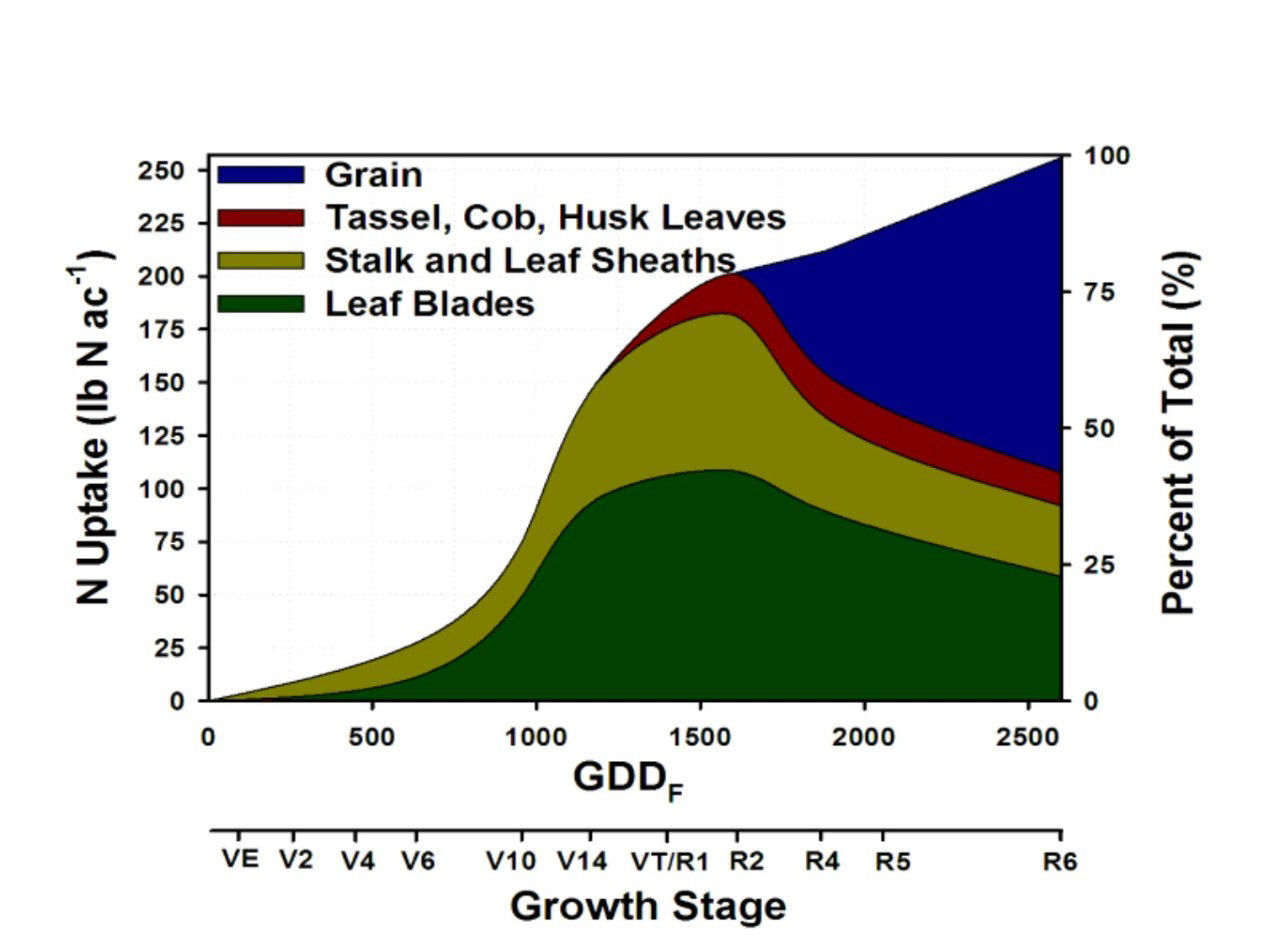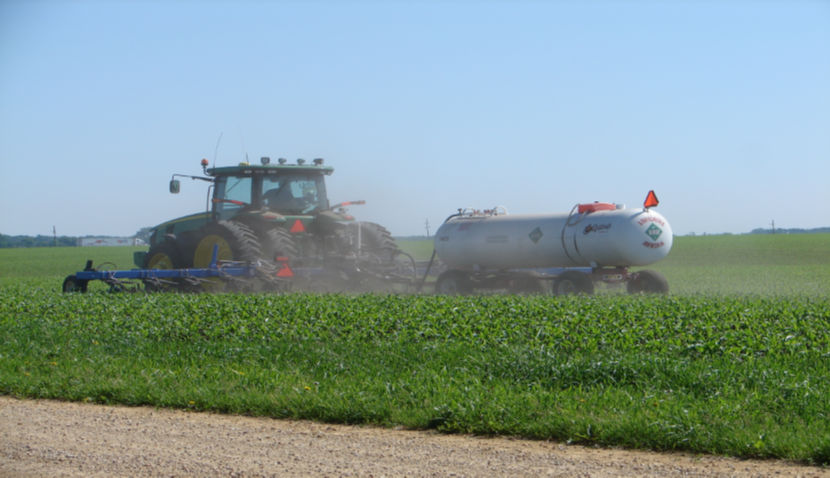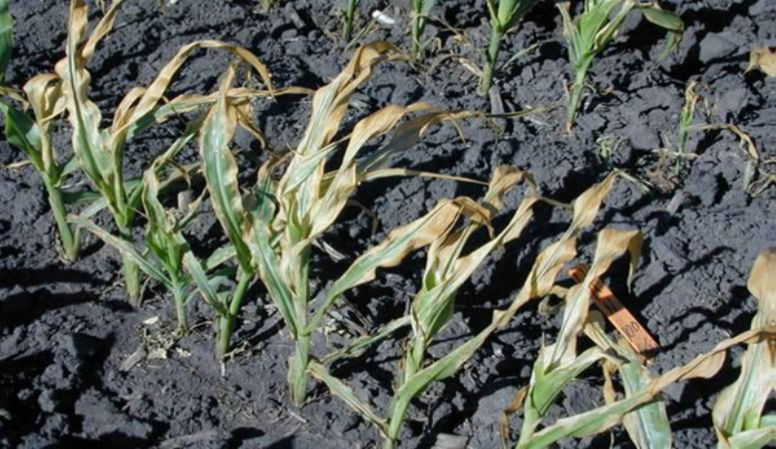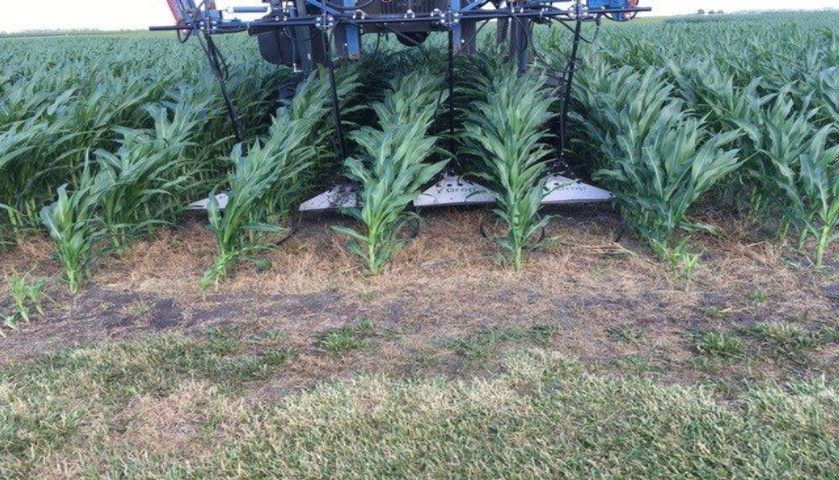3 MIN READ
SIDEDRESS AND PRE-TASSEL NITROGEN APPLICATION IN CORN
June 27, 2023
- Nitrogen (N) is the most yield-limiting nutrient for corn production. Nitrogen is required for the production of amino acids, proteins, and chlorophyll. If chlorophyll levels are insufficient, they reduce yield potential.
- A 200-bushel corn crop requires about 200 to 250 lb N per acre (178 to 223 kg per hectare) or about 1 to 1.25 lb (0.45 to 0.57 kg) of N per bushel.
- Generally, a 200-bushel corn produced on a silt loam soil requires about 10% (20 lb, 9 kg) of the total N (200 lb, 90 kg) from planting to V6 growth stage, 55% (110 lb, 49 kg) from V6 to R1 growth stages, and 35% (70 lb, 32 kg) from R1 to R6 growth stages.
- Sidedressing is used to provide corn with N close to when uptake and utilization is at its peak.
Background
Within the plant, N is critical for photosynthesis and the production of amino acids, proteins, and chlorophyll. Without chlorophyll, photosynthetic processes and potential yield are compromised and reduced. Applying all N preplant risks N being lost to the environment through leaching or denitrification. Lost N is not only unavailable for crop growth, but also becomes an environmental concern when it enters waterways and the air. Sidedress and pre-tassel N applications can help reduce environmental concerns associated with N loss, supply N close to maximum crop uptake, and allow for adjusting N rates depending on current growth, plant population, and environmental forecasts.

Sidedressing Nitrogen
Sidedress applications provide some advantages over preplant applications. In wet springs, N can be lost when applied early. Sidedressing N allows for better distribution of labor and equipment, especially in wet springs when the planting window is small, leading to less risk of N loss caused by excess precipitation and slow crop uptake. Additionally, a sidedress N application is more closely linked to plant needs.
In a 3-year study with 49 sites across the Midwest, it was observed that split applications at V7 to V9 growth stages produced similar yields to preplant applications 82% of the time. In 14% of the sites, split applications provided a higher yield, while split applications performed worse than preplant applications at only 4% of the sites.1 The few sites where the single-N application was better than the split application were finer-textured soils with high organic matter content.1

Sources of Nitrogen
Urea-Ammonium Nitrate. Early-season sidedressing can be accomplished with an applicator that injects N or can be surfaced applied in the form of urea, or 28% or 32% UAN liquid solutions. Surface-applied N should receive rainfall, irrigation, or tillage soon after application to avoid volatilization, which can be up to 30% within two weeks if temperatures are warm. Urea granules can burn leaves when they fall into plant whorls or when UAN liquids are applied to the leaves (Figure 3).

To help reduce the risk of burning leaves, UAN recommendations include:
- Apply less than 90 lb UAN/acre when corn is at growth stages V3 or V4.
- Apply less than 60 lb UAN/acre when corn is at V7 growth stage.
- Drops should be used after V7 through pre-tassel nitrogen (PTN) to apply a concentrated UAN band application at an N rate that supports current yield potential.
Anhydrous Ammonia. In general, the injection of anhydrous ammonia is potentially the best sidedressing choice. Best management practices (BMP) for applying anhydrous ammonia as a sidedress include:
- Applications should be to moist, not wet soil.
- Applications should occur prior to root expansion into the row middles to avoid root damage.
- Applications can begin immediately after planting.
- The injection can be between every row or every other row.
- To avoid snapping off plants, applications should occur before plants are too tall for the toolbar.
- Applicator safety precautions should be followed to avoid injury to eyes and limbs.
Pre-tassel N (PTN) application
Nitrogen can also be applied during the growing season when the plants enter the V10 growth stage, just prior to tasseling (VT). An application during this period is referred to as pre-tassel N application. Recommended PTN application rates range from 15 to 25% of the total N to be applied. The remaining 85 to 75% of the total applied N should have already been split between a preplant injection or a sidedress operation. The use of equipment such as a 360 Y-Drop® applicator should be considered for a PTN application, to place N near the plant base and to reduce the potential for plant breakage (Figure 4).
Should weather conditions prevent a sidedress application, a PTN application can help supply the needed N. University trials have demonstrated that a late PTN application can improve yield potential.2

SOURCES:
1Fernandez, F. and Carlson, B. 2020. Things to consider when sidedressing nitrogen. University of Minnesota. https://blog-crop-news.extension.umn.edu/2020/06/things-to-consider-when-sidedressing.html
2Brouder, S., Joern, B., Vyn, T., and Nielsen, B. 2003. Nitrogen fertilizer management in good economic times and bad. Publication AGRY-01-01. Purdue University. https://www.agry.purdue.edu/ext/pubs/agry-01-01.pdf
1213_66021
Seed Brands & Traits
Crop Protection
Disclaimer
Always read and follow pesticide label directions, insect resistance management requirements (where applicable), and grain marketing and all other stewardship practices.
©2024 Bayer Group. All rights reserved.